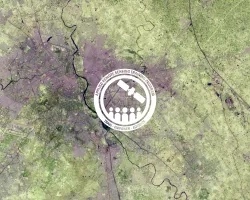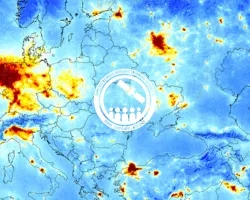Description
It is well recognized that long-term precipitation measurements are necessary for understanding and monitoring regional precipitation characteristics. This includes characteristics crucial for monitoring water resources and hazards like floods and droughts. TRMM was the first NASA mission dedicated to observing precipitation. It operated from November 1997 to April 2015. The Global Precipitation Measurement (GPM) Mission launched in February 2014 as a follow-on to TRMM. Both TRMM and GPM satellites, together with additional national and international satellites, were used to produce multi-satellite products such as TMPA and IMERG. Until recently, these two separate products covered different time periods. There was a lack of long-term, continuous, precipitation time series data.
Recently, GPM-IMERG retrospectively analyzed TRMM-TMPA data to produce a consistent, combined precipitation time series from 2000-present. This extended IMERG data product is available at half-hourly resolution and 0.1x0.1 degree spatial resolution. The product will be useful for deriving long-term mean precipitation as reference. It will also help with monitoring extreme precipitation at regional scale.
Past ARSET trainings on water resources and flood management covered TMPA and IMERG data and their applications in detail. This advanced webinar will focus on analysis and interpretation of the new long-term IMERG data, focused on extreme dry and wet period monitoring and management. The webinar will include lectures and hands-on exercises to derive regional precipitation statistics.
Attendees that do not complete the required prerequisites may not be adequately prepared for the pace of the training.
- Fundamentals of Remote Sensing
- Overview and Applications of Integrated Multi-State Retrievals of GPM (IMERG) Long-Term Precipitation Data Products
By the end of this training, attendees will be able to:
- Derive regional precipitation statistics (mean, standard deviation, anomalies, percentile values)
- Calculate and interpret the Standardized Precipitation Index (SPI) for assessing extreme dry and wet periods
Local, regional, state, federal, and international entities, including public and private sector organizations, engaged in water resources and disaster management.
- Three 2-hour sessions
This session will provide a brief overview of IMERG data including its strengths and caveats and how to access and download IMERG data. The lecture will then follow with a hands-on exercise on the calculation of regional statistics utilizing precipitation IMERG data.
English:
Spanish:
This session will show attendees how to calculate SPI on defined time scales of 1 to 3 months as well as diagnosis of wet and dry conditions based on SPI. The session will then follow with an exercise calculating SPI on 1 to 3 month time scales.
English:
Spanish:
This session will focus on the analysis of SPI for ~20-year period (2000 to present) to assess the frequency and spatial extent of extreme wet and dry conditions, together with socioeconomic data to understand flood and drought risk.
English:
Spanish:



